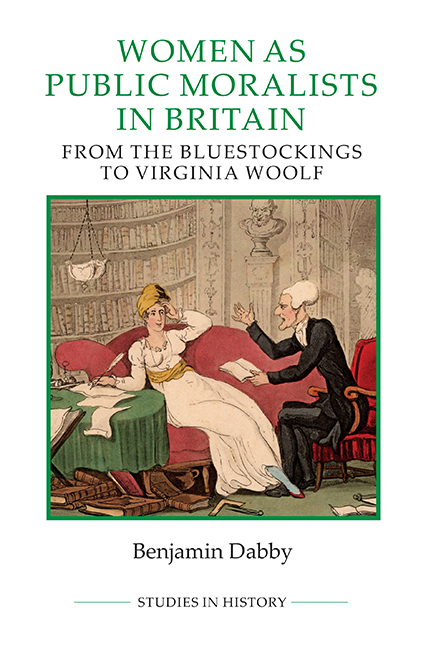Book contents
- Frontmatter
- Dedication
- Contents
- List of illustrations
- Acknowledgements
- Abbreviations
- Introduction
- PART I HISTORY AND THE PRESENT
- PART II LITERATURE, ART AND LIFE
- 4 Anna Jameson, cultural authority and public moralism
- 5 Beautiful and useful arts in Hannah Lawrance's cultural criticism
- 6 Marian Evans's cultural criticism in the context of women's public moralism
- PART III CHANGE AND CONTINUITY FROM THE FIN-DESIÈCLE TO MODERNITY
- The contexts of conclusions
- Bibliography
- Index
5 - Beautiful and useful arts in Hannah Lawrance's cultural criticism
from PART II - LITERATURE, ART AND LIFE
Published online by Cambridge University Press: 25 October 2017
- Frontmatter
- Dedication
- Contents
- List of illustrations
- Acknowledgements
- Abbreviations
- Introduction
- PART I HISTORY AND THE PRESENT
- PART II LITERATURE, ART AND LIFE
- 4 Anna Jameson, cultural authority and public moralism
- 5 Beautiful and useful arts in Hannah Lawrance's cultural criticism
- 6 Marian Evans's cultural criticism in the context of women's public moralism
- PART III CHANGE AND CONTINUITY FROM THE FIN-DESIÈCLE TO MODERNITY
- The contexts of conclusions
- Bibliography
- Index
Summary
In a career which included almost thirty years of detailed articles about visual art and literature in the British Quarterly Review, Hannah Lawrance argued that culture had the potential to promote social cohesion and improve the nation's moral fibre. Just as Anna Jameson had exploited the success of her historical and literary criticism to broaden the remit of her moralism to include art and art history, so Lawrance's historical scholarship authorised her wider critical remit. Nevertheless, each moralist reached a different understanding of the potential of the arts to aid social reform. In Jameson's criticism, Shakespeare's plays or Rubens's paintings improved the nation when individuals came to appreciate the moral narratives that they contained and developed sympathy with the wider national community to which they belonged. But this faith in the ‘mighty influence of æsthetics’ raised questions in Lawrance's mind. Did history verify Jameson's belief in the positive moral influence of art and literature? If Jameson were correct, Lawrance also wanted to know under what conditions they exercised a beneficial effect. She agreed with other women of letters about the importance of women's education, which she also set in the context of her wider vision of Britain's future. However, her historical analysis of the visual and literary arts revealed that their influence was only beneficial under certain conditions.
Lawrance's enquiry began in her reviews of Jameson's first art histories. In 1845 Jameson's Sacred and legendary art began to be serialised in the Athenaeum before being released in book form in 1848; Legends of the monastic orders followed in 1850. In both works, Jameson applied to the medieval iconography of Christian saints the method of art criticism that she had pioneered in Visits and sketches at home and abroad (1834). This method, as shown in chapter 4, assessed the artist's choice of subject in moral terms and identified the main advantages of his or her technical skill in portraying the given lesson. Now she reminded her readers a decade later that her task was ‘not formal, nor technical, like that of a catalogue or a calendar’, but to explain the ‘great diversity of objects, scenes, stories, and characters’ represented. As she put it some years later, ‘[w]e should be able to read a picture as we read a book’.
- Type
- Chapter
- Information
- Women as Public Moralists in BritainFrom the Bluestockings to Virginia Woolf, pp. 128 - 154Publisher: Boydell & BrewerPrint publication year: 2017



